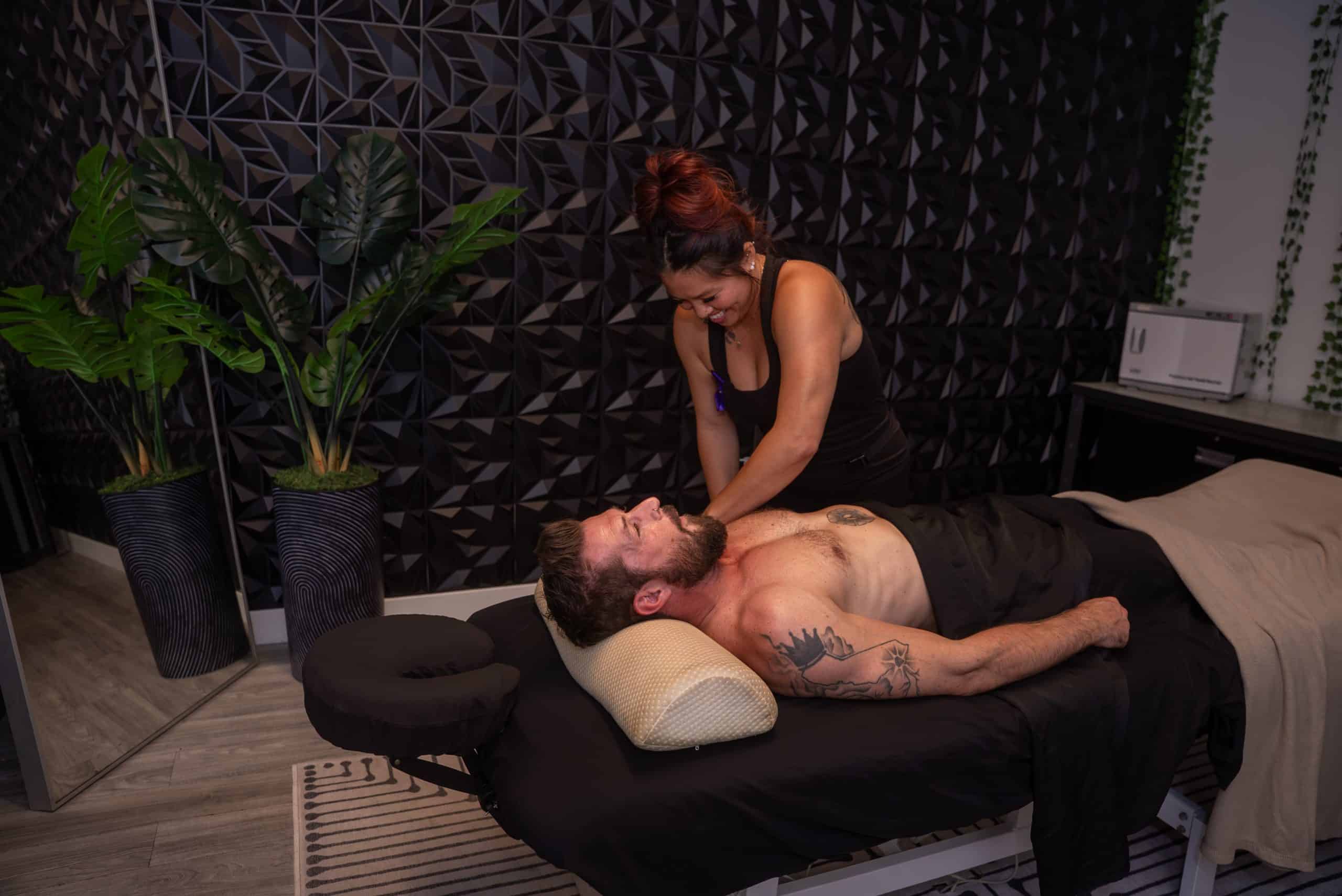Trauma leaves deep marks—not just in the mind, but in the body too. Many people living with trauma find that even after years of therapy, they still feel anxious, on edge, or disconnected from themselves.
This is because trauma doesn’t just live in our memories—it lives in our nervous system. One powerful approach that addresses this is called Somatic Experiencing. It offers a gentle, body-centered way to heal trauma at its root.
Somatic Experiencing (SE) is a form of therapy developed by Dr. Peter Levine. It’s based on the idea that trauma overwhelms the nervous system, trapping energy in the body. Instead of focusing mainly on talking about traumatic events, SE helps people listen to their bodies, release trapped survival energy, and restore a sense of safety and wholeness.
Rather than reliving the trauma through words, Somatic Experiencing works with the felt sense—the internal awareness of bodily sensations, movements, and feelings.
When we experience a threatening event, our body automatically reacts through the fight, flight, or freeze response. In healthy situations, once the threat passes, the nervous system returns to a calm state.
However, during overwhelming trauma—such as abuse, accidents, or war—the body’s natural recovery process can get stuck. The stress energy remains trapped in the nervous system, leading to symptoms like:
– Anxiety
– Hypervigilance
– Numbness
– Chronic pain
– Emotional overwhelm
Research published in Frontiers in Psychology shows that unresolved trauma dysregulates the autonomic nervous system, keeping people in a state of chronic stress or shutdown (Payne, Levine, & Crane-Godreau, 2015).
Somatic Experiencing gently helps complete the body’s natural response cycle, allowing the trapped energy to discharge and the nervous system to reset.

🌿 1. Building Safety and Trust
Healing trauma starts with feeling safe. In Somatic Experiencing, therapists create a slow, supportive environment where clients feel in control at all times. There is no pushing, no forcing of painful memories to surface.
Instead, the focus is on developing an internal sense of safety—something that trauma survivors often lose.
🌱 2. Tuning into Body Sensations
Instead of jumping into the story of what happened, SE invites clients to notice:
– Tightness in the chest
– Tingling in the hands
– Warmth in the stomach
– Trembling in the legs
By staying with these small, manageable sensations, people learn to track their body’s responses without becoming overwhelmed. This practice teaches the nervous system that it’s safe to feel again.
🌼 3. Completing the Survival Response
In nature, animals instinctively shake, run, or freeze after a threatening event to release survival energy. Humans often suppress these natural reactions due to social pressures or fear.
Somatic Experiencing helps the body complete unfinished actions—like feeling the urge to run, fight, or curl up—and release the stuck energy. This discharge often happens through:
– Gentle shaking
– Spontaneous deep breaths
– Warmth or lightness spreading through the body
When this happens, people often feel a profound sense of relief, relaxation, and renewed energy.
🌞 4. Rebuilding a Sense of Empowerment
Trauma often leaves people feeling powerless and trapped. Through SE, individuals reconnect with their natural instincts and resilience. They realize that their bodies are not broken—they have an inner wisdom that knows how to heal.
This empowerment lays the foundation for greater confidence, emotional regulation, and deeper connections with others.
Traditional talk therapy can be very helpful for understanding trauma intellectually. However, it often doesn’t reach the body’s stored memories and survival responses.
Somatic Experiencing works directly with the nervous system, helping people process trauma in a way that words alone cannot. When combined, talk therapy and somatic work can create a more complete healing experience.
A study published in Traumatology found that somatic-based therapies significantly reduced PTSD symptoms compared to standard cognitive therapies alone (Andersen et al., 2017).
Somatic Experiencing can help people dealing with:
– Childhood trauma
– Car accidents
– Assault or abuse
– Natural disasters
– Medical trauma
– Chronic stress and burnout
– Anxiety and depression linked to trauma
Because SE moves at the client’s pace, it’s especially helpful for those who feel overwhelmed by intense emotions or find traditional therapy too triggering.
Getting Started with Somatic Experiencing
If you’re interested in trying SE, here’s what to look for:
– Certified Practitioners: Make sure your therapist is trained and certified in Somatic Experiencing.
– Trauma-Informed Approach: Choose someone who understands the delicate nature of trauma work.
– A Sense of Connection: Feeling safe and supported with your practitioner is essential.
Sessions typically involve gentle conversation, body awareness exercises, and mindful tracking of sensations. You remain fully clothed and seated or lying comfortably during the work.
Trauma isn’t just in your mind—it’s in your body too. Somatic Experiencing offers a kind, natural, and powerful way to help your body complete its healing journey.
By tuning into the wisdom of the body, you can release the past, restore your sense of safety, and reconnect with life in a deeper, more vibrant way.
Healing is possible—and sometimes, it begins with simply noticing a breath, a sensation, or a moment of peace inside you.
Sources
– Payne, P., Levine, P. A., & Crane-Godreau, M. A. (2015). Somatic experiencing: Using interoception and proprioception as core elements of trauma therapy. Frontiers in Psychology, 6, 93.
– Andersen, T. E., Lahav, Y., Ellegaard, H., & Manniche, C. (2017). Chronic pain patients’ improvement after somatic experiencing treatment: A randomized controlled trial. Traumatology, 23(2), 127–135.
Please follow and like us:










